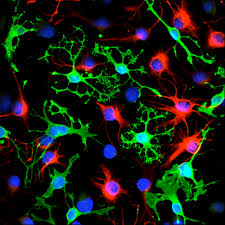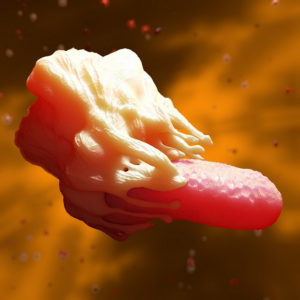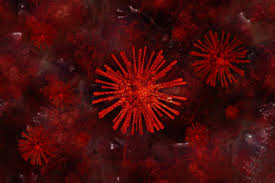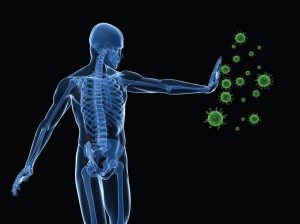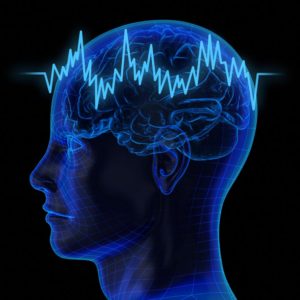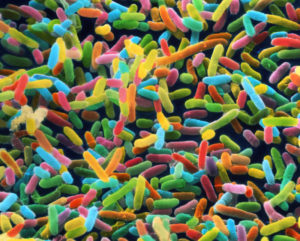For the past few decades, it has been possible to directly manipulate an organism’s genes early in development, to generate, for example, mice that harbour genetic modifications. Such transgenic mice have been powerful model systems in which to study human disease1, but conventional approaches for generating these animals can be costly and time-consuming. Writing in Nature, Chang et al.2 describe an alternative approach to building complex mouse models with which to interrogate the function and diseases of the forebrain. The authors’ approach could also be used to produce models focused on other regions of the central nervous system (CNS).
In conventional transgenic approaches, genes are modified in mouse embryonic stem (ES) cells, which are pluripotent — they can give rise to all cell types of the animal’s body. The genetically engineered cells are then injected into a mouse embryo at an early stage of development called the blasto-cyst stage. The result is a chimaeric mouse, in which some cells are genetically modified and some are not. If the animal’s eggs or sperm contain the genetic modification, it can be bred to produce offspring in which all the cells are modified (Fig. 1a). This approach, although recently accelerated by gene-editing technologies such as CRISPR–Cas9, remains expensive and labour-intensive. Moreover, unless the genetic modification is engineered to be expressed in only certain cell types, this approach is limited to genes that are not essential for early embryonic development.
More than two decades ago, the laboratory that performed the current study devised a technique called blastocyst complementation, to circumvent these limitations in the immune system3. The approach is based on the fact that, if the development of a particular organ in the host is disabled, a vacant niche is created that can be filled by tissue derived from newly introduced ES cells. In that paper, the authors used RAG2-deficient mice, which do not have mature immune cells called T and B cells. They showed that embryos of this strain could give rise to mice that generated T and B cells normally if blastocysts were injected with wild-type mouse ES cells. Moreover, these immune cells were exclusively of donor origin.
Blastocyst complementation has since been used to generate the lens of the eye4, the kidney5 and the heart6. The technique has also been used to generate pancreases made mainly of cells from another species, by injecting mouse cells into pancreas-disabled rat blastocysts and vice versa7. This type of animal, called an interspecies chimaera, offers great potential both for understanding fundamental principles in biology and for regenerative medicine, in which the ultimate goal is to grow organs that carry the genome of a specific individual.
Chang et al. developed an approach that they call neural blastocyst complementation (NBC), which involved disrupting the developing mouse forebrain — the region that will generate the brain’s hippo-campus, cerebral cortex and olfactory bulbs, among other structures (Fig. 1b). They crossed existing transgenic mouse strains to produce embryos in which diphtheria toxin subunit A was expressed specifically in forebrain progenitor cells. This led to the death of these cells, and therefore to mice that lacked forebrain structures. But wild-type ES cells injected into blastocysts of this strain could repopulate the forebrain niche. The authors found that the forebrain structures in the resulting animals were reconstituted. These mice were indistinguishable from controls in a set of behavioural assays.
The researchers next showed that this approach could be coupled with CRISPR–Cas9 editing of donor ES cells as a way of interrogating the function of genes of interest in the forebrain. As a proof of principle, they focused on the gene doublecortin (Dcx), which encodes a protein involved in neuronal migration and causes malformations of the cerebral cortex when mutated in patients. Chimaeras produced using Dcx-deficient donor ES cells exhibited hippocampal defects that mimicked those observed8 in transgenic mice lacking Dcx.
Chang and colleagues’ NBC approach could facilitate the study of brain development and disease in several ways. First, generating transgenic animals in which both copies of a gene are mutated requires multiple breeding steps: even if both copies of the gene are mutated in the injected ES cells, the chimaeric mice must be crossed to wild-type partners to produce offspring with one normal copy, and an extra step is needed to produce animals in which both gene copies are mutated. The need for these breeding steps is eliminated with NBC. Similarly, numerous modifications can be introduced into donor ES cells at the same time using CRISPR–Cas9, rather than being brought together through complex breeding strategies. This could accelerate studies into disorders involving more than one gene, such as autism spectrum disorders, and improve our understanding of gene–gene interactions during development….

